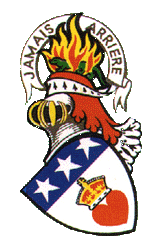   |
|
|
|
|
| ||||||
Balvenie Castle
 For
over 500 years, Balvenie Castle served as the formidable stronghold
of the great lords who ruled over this part of north-east Scotland.
The immensely powerful ‘Black’ Comyn earls of Buchan built it in the
13th century. When they were forfeited in the early 14th century,
because of their alliance with the ill-fated John Balliol, the
stronghold passed to the mighty ‘Black’ Douglases. And when the
Douglases too were wiped out around 1455 by James II, the victorious
Stewart king entrusted it to a kinsman, John Stewart, Earl of Atholl.
It remained with his descendants for the next 250 years. Today’s
visitor will find important, and impressive, remains dating from all
three dynastic families. For
over 500 years, Balvenie Castle served as the formidable stronghold
of the great lords who ruled over this part of north-east Scotland.
The immensely powerful ‘Black’ Comyn earls of Buchan built it in the
13th century. When they were forfeited in the early 14th century,
because of their alliance with the ill-fated John Balliol, the
stronghold passed to the mighty ‘Black’ Douglases. And when the
Douglases too were wiped out around 1455 by James II, the victorious
Stewart king entrusted it to a kinsman, John Stewart, Earl of Atholl.
It remained with his descendants for the next 250 years. Today’s
visitor will find important, and impressive, remains dating from all
three dynastic families.
The castle of the ‘Black’ Comyns The original castle was built in the latter half of the 13th century. This makes it one of the oldest stone castles in Scotland. The builder was probably Alexander (died 1289), the 2nd Earl of Buchan, and son of Earl Alexander of Buchan by his second marriage.He founded the ‘Black’ Comyns, the junior line. The senior line, the ‘Red’ Comyns, were descended from Earl William’s first marriage. They held sway over a vast territory reaching from the Moray Firth to Inverlochy (now Fort William) on the west coast. The ‘Black’ Comyns built the massive stone curtain wall that still dominates the site.The castle of the ‘Black’ Douglases The Comyns were overthrown during the Wars of Independence with England. They were allied with the doomed John Balliol, and were annihilated when their arch-rival, Robert Bruce, became king in 1306. Bruce granted the lordship, though not the earldom, to his good friend, ‘the Good Sir James’ of Douglas, progenitor of the ‘Black’ Douglases. This family became as mighty as the ‘Black’ Comyns, though their powerbase lay in southern Scotland. Nothing is documented as to how the Black Douglases first acquired the castle but the most likely account is that it came with the marriage of the heiress Joanna Murray to Archibald 'the Grim' , 3rd Earl of Douglas in 1362. His son and successor Archibald Douglas, 4th Earl of Douglas granted his younger brother James 'the Gross' the lordship of Balvenie in 1408. James's main residence was at Abercorn Castle, a coastal fortress to the west of Edinburgh and Balvenie Castle's use was as temporary accommodation when the need arose. In 1440, William Douglas, 6th Earl of Douglas was murdered by King James II and the elderly James the Gross, possibly complicit to the murder became the 7th earl. James immediately provided the lordship of Balvenie with its castle to his youngest son, John Douglas, Lord of Balvenie. Earl James's death in 1443 signaled a resumption of the hostility between the royal Stewarts and the Black Douglases. The Battle of Arkinholm in May 1455 saw the defeat of this, the main Douglas line by an army loyal to James II. All of their lands and titles were forfeited to the Crown including Balvenie Castle.The ‘Black’ Douglases’ contribution to the castle is less obvious – the cluster of ruined domestic buildings on the far (north) side of the courtyard. The castle of the Stewarts Balvenie is in the care of Historic Scotland, and open to the public. Location: NJ 326409 See also: • The Castles of the Black Douglases, by Callum Watson • Historic Environment Scotland Statement of Significance
| |||||||||||||||||||||||||||
|
The content of this website is a collection of materials gathered from a variety of sources, some of it unedited. The webmaster does not intend to claim authorship, but gives credit to the originators for their work. As work progresses, some of the content may be re-written and presented in a unique format, to which we would then be able to claim ownership. Discussion and contributions from those more knowledgeable is welcome. Last modified: Thursday, 23 January 2025 |